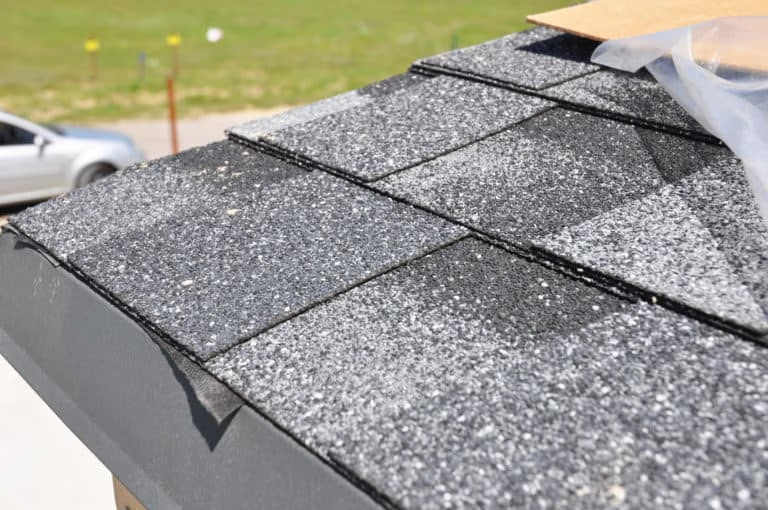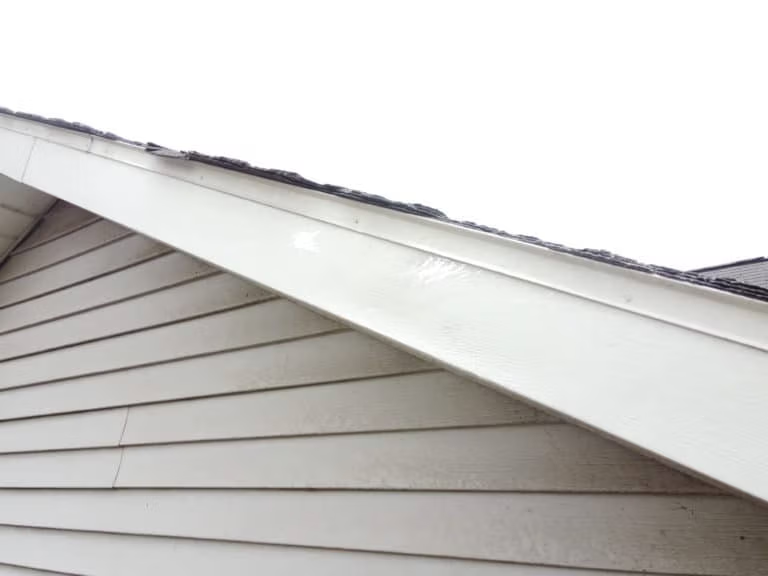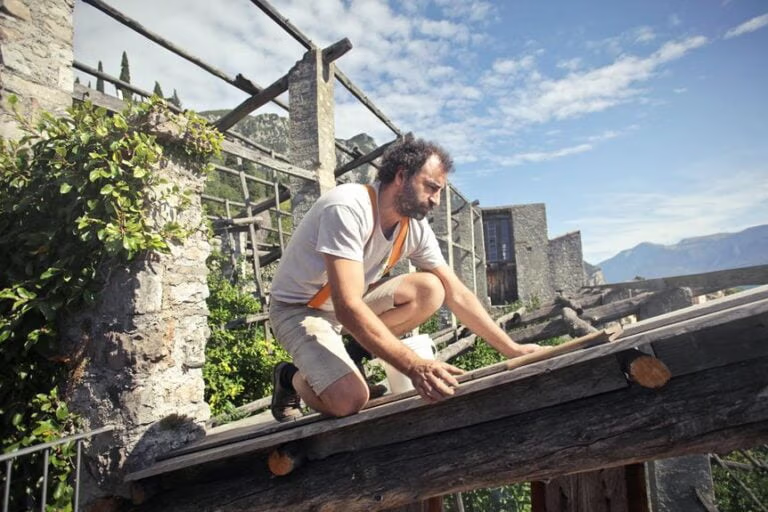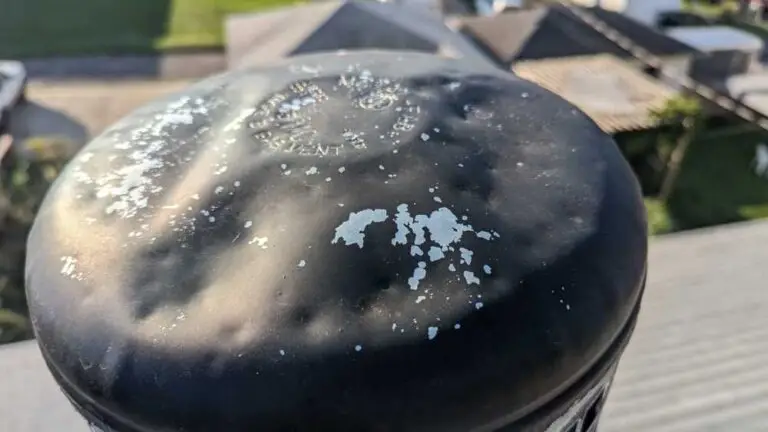A roof should generally be inspected at least once a year, especially for newer structures. For older roofs, bi-annual checks are advisable to promptly catch signs of wear and damage. Factors such as severe weather, roofing material, and nearby trees can influence inspection frequency. Seasonal assessments are crucial for maintaining roof health, including clearing debris and checking for leaks and shingle conditions. Regular inspections help identify minor issues before they escalate, extending the roof's lifespan and enhancing your home's value. Stay informed about specific indicators and benefits that underscore the need for these timely evaluations to safeguard your property.
The Importance of Routine Roof Inspections
- New roofs should be inspected annually to maintain optimal condition and address any early issues.
- Older roofs require inspections at least twice a year due to increased vulnerability to damage.
- Severe weather conditions like heavy rain, strong winds, snow, and ice necessitate more frequent inspections.
- Regular inspections help catch minor issues early, preventing costly repairs and extending the roof's lifespan.
- Overhanging trees and debris accumulation should be checked frequently to avoid damage and water backup.
Factors Affecting Inspection Frequency

Several factors significantly influence how often a roof should be inspected, ranging from environmental conditions to the type of roofing material used. For instance, roofs in regions prone to severe weather, such as hurricanes, heavy snowfall, or high winds, warrant more frequent inspections. These extreme conditions can accelerate wear and tear, increasing the likelihood of damage that could go unnoticed without regular checks.
Another pivotal factor is the age of the roof. Older roofs tend to have more issues due to prolonged exposure to the elements, necessitating more frequent inspections to preempt potential problems. Conversely, newer roofs might not need as many inspections initially but should still be monitored to ensure their integrity.
The type of roofing material also plays a crucial role. Materials like asphalt shingles may require more frequent inspections compared to metal or tile roofs, which can be more durable. Additionally, the presence of overhanging trees can increase the need for inspections, as falling leaves and branches can cause damage or block drainage systems, leading to water damage.
In essence, understanding these factors helps homeowners and property managers establish an optimal inspection routine tailored to their specific circumstances, ensuring the longevity and functionality of their roofs.
Recommended Schedule for New Roofs
For new roofs, establishing an annual inspection routine is crucial to maximizing their lifespan and ensuring early detection of potential issues. Regular checks can identify weather-induced damage that might otherwise go unnoticed, safeguarding your investment. By adhering to a yearly schedule, homeowners can mitigate more significant repair costs down the line.
Annual Inspection Benefits
Conducting an annual inspection is essential for maintaining the longevity and integrity of a new roof. This proactive approach helps to identify and address minor issues before they escalate into significant, costly problems. An annual check-up allows homeowners to catch early signs of wear and tear, ensuring that the roof remains in optimal condition and maximizes its lifespan.
Furthermore, an annual inspection provides peace of mind. Knowing that your new roof is regularly evaluated by professionals can alleviate the stress associated with potential roof failures. This routine check-up ensures that any small cracks, loose shingles, or minor leaks are promptly repaired, preventing them from developing into critical structural concerns.
Additionally, annual inspections can be instrumental in maintaining the roof's warranty. Many roofing warranties require regular maintenance checks to remain valid. By adhering to an annual inspection schedule, homeowners can ensure that they are in compliance with warranty terms, safeguarding their investment.
Moreover, these inspections offer homeowners the opportunity to establish a relationship with a trusted roofing professional. This rapport can be invaluable for future needs, whether it be routine maintenance or emergency repairs, providing consistency and reliability in roof care.
Weather-Induced Damage Check
Regularly scheduled weather-induced damage checks are crucial for safeguarding the structural integrity of a new roof, particularly in regions prone to extreme weather conditions. While new roofs are generally resilient, they are not impervious to the impacts of severe weather events such as heavy rains, high winds, hailstorms, and snow. These elements can subtly but significantly compromise a roof's durability if not addressed promptly.
For optimal maintenance, it is advisable to conduct a weather-induced damage check after each significant weather event. This proactive approach involves a thorough inspection focusing on the identification of loose or missing shingles, damage to flashing, leaks, and other vulnerabilities. Even minor issues, if left unchecked, can escalate into significant problems, leading to costly repairs or premature roof replacement.
Moreover, engaging a professional inspector ensures that any damage is accurately assessed and addressed. They bring specialized knowledge and equipment to detect issues that are not visible to the untrained eye. By integrating these checks into your maintenance routine, you not only extend the lifespan of your roof but also preserve the safety and value of your property. Regular inspections are a small investment for long-term peace of mind.
Guidelines for Older Roofs
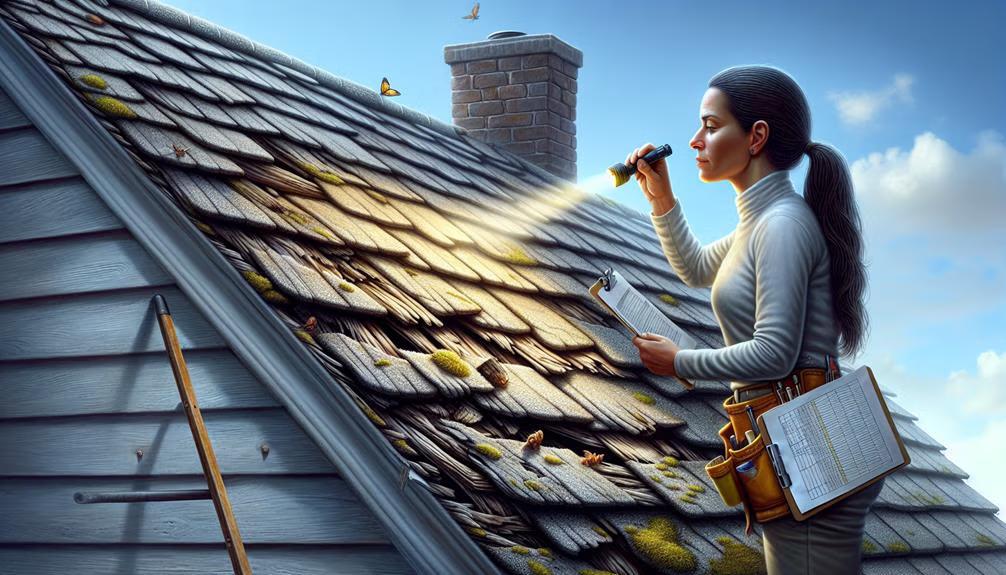
As roofs age, it becomes increasingly important to adhere to specific guidelines to ensure their longevity and safety. Older roofs, typically those over 20 years of age, require more frequent and detailed inspections. The materials used in older roofs, like asphalt shingles, wood shakes, or clay tiles, often show signs of wear and tear that might not be immediately visible. Regular inspections help identify issues such as loose or missing shingles, water damage, and structural integrity concerns.
Homeowners should schedule roof inspections at least twice a year for older roofs. An ideal schedule would be in the spring and fall, allowing professionals to assess and address any damage caused by the preceding seasons. Additionally, after any significant weather events, it's prudent to have the roof checked promptly to mitigate any immediate risks.
During these inspections, professionals should pay close attention to areas prone to leaks, such as valleys, chimneys, and skylights. The attic should also be inspected for signs of water intrusion and proper insulation. By following these guidelines, homeowners can proactively manage the condition of their aging roofs, ensuring safety and extending the roof's lifespan.
Impact of Weather Conditions
Weather conditions significantly impact the durability and performance of a roof, subjecting it to various stresses that can accelerate wear and tear. From the blistering heat of summer to the biting cold of winter, each season brings its unique challenges. Rain, snow, and wind can all cause significant damage over time, leading to leaks, shingle displacement, and structural deterioration.
Different weather conditions can affect the roof as follows:
| Weather Condition | Potential Impact on Roof |
|---|---|
| Heavy Rain | Water infiltration, mold, and rot |
| Strong Winds | Shingle displacement and structural damage |
| Snow and Ice | Ice dams and weight stress |
| Hail | Dents, cracks, and punctures |
| Extreme Heat | Shingle curling and material degradation |
These factors underscore the importance of regular roof inspections. For instance, after a severe storm, it's crucial to assess potential damage to prevent minor issues from escalating into costly repairs. Moreover, climates with extreme temperature fluctuations can cause materials to expand and contract, leading to cracks and other vulnerabilities. By understanding the impacts of various weather conditions, homeowners can better anticipate issues and take proactive measures to maintain the integrity of their roofs. This approach not only extends the lifespan of the roof but also ensures the safety and comfort of the home.
Seasonal Inspection Tips
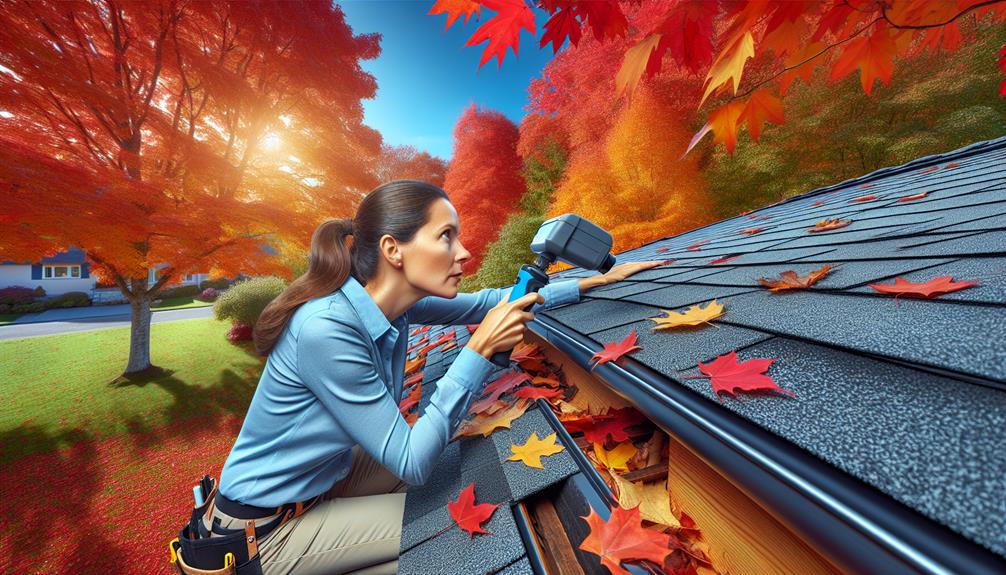
As the seasons change, so do the demands on your roof, making regular inspections crucial. Start by clearing any debris that might have accumulated, as it can cause water damage and block drainage systems. Additionally, inspect for any leaks and evaluate the condition of your shingles to ensure your roof remains in optimal shape year-round.
Check for Debris
Regularly checking for debris on your roof is crucial to preventing potential damage and ensuring its longevity. Seasonal changes often bring a variety of debris, from fallen leaves in autumn to twigs and branches during spring storms. This accumulation can trap moisture, leading to mold growth, rot, and even structural damage if left unchecked.
Performing a debris inspection after significant weather events is a wise practice. Wind can scatter various materials onto your roof, while rain can exacerbate the problem by making the debris heavy and harder to remove. A gentle yet thorough cleaning can mitigate these risks, preserving the integrity of your roofing materials.
One practical tip is to use a leaf blower or a soft-bristled broom to clear the debris. Be mindful of the roof's surface, as aggressive cleaning can do more harm than good. Additionally, pay close attention to the gutters and downspouts; clogged gutters can lead to water backup and damage.
Inspect for Leaks
Identifying leaks early is essential to preventing costly repairs and maintaining the structural integrity of your roof. Leaks can evolve from minor annoyances to significant issues, potentially causing internal damage that compromises the entire structure. Conducting seasonal inspections for leaks is a proactive measure that can save homeowners considerable time and expense.
Start by examining the roof's interior. Look for water stains on ceilings and walls, as these are often the first signs of a leak. In the attic, inspect for damp insulation or mold, both indicators of moisture intrusion. Moving outside, focus on areas prone to leaks such as roof valleys, around chimneys, skylights, and vents. These spots are particularly vulnerable due to their complex construction and sealant dependency.
During the inspection, note any visible water trails or soft spots on the roof's surface. Pay close attention after heavy rains or snow melts, as these are prime times for leaks to develop. Remember, even small cracks or missing shingles can lead to significant water damage over time. Regular, thorough inspections can help you catch these issues early, preserving the longevity and safety of your home.
Evaluate Shingle Condition
To ensure your roof remains in optimal condition, it's crucial to meticulously evaluate the state of your shingles during seasonal inspections. Shingles serve as the first line of defense against the elements, and their state can significantly affect the longevity and safety of your roof. During these inspections, pay close attention to any signs of wear and tear, such as curling, cracking, or missing shingles.
A thorough evaluation can uncover issues that, if left unaddressed, might lead to costly repairs or even a complete roof replacement. Here's a quick guide to what you should look for during each season's inspection:
| Season | Shingle Condition Checklist |
|---|---|
| Spring | Check for damage from winter storms, such as cracks. |
| Summer | Look for signs of heat damage or curling shingles. |
| Fall | Inspect for wear from UV exposure and falling debris. |
| Winter | Ensure shingles are intact to withstand snow and ice. |
Signs You Need an Inspection
Noticing water stains on your ceiling or missing shingles on your roof are clear indicators that a roof inspection is urgently needed. These signs often point to underlying issues that, if left unchecked, could lead to significant structural damage. Water stains suggest leaks, which might be caused by compromised flashing, damaged shingles, or clogged gutters. Missing shingles, on the other hand, can expose your roof to the elements, making your home vulnerable to water infiltration and further damage.
Beyond these visual clues, there are subtler signs that warrant attention. For instance, granules in your gutters or downspouts can indicate shingle deterioration. Sagging roof sections or warped shingles are also red flags that should not be ignored. Moreover, unusual spikes in energy bills could hint at poor insulation due to roof damage, as your HVAC system works harder to maintain a comfortable indoor temperature.
Lastly, if your roof is nearing the end of its expected lifespan, typically 20-30 years for asphalt shingles, it's prudent to schedule an inspection. Even if no visible damage is present, an aging roof can have hidden vulnerabilities. Prompt inspections can help address these issues before they escalate, ensuring your home remains safe and secure.
Benefits of Regular Inspections

Regular roof inspections offer a multitude of benefits that go beyond merely identifying visible signs of damage. By scheduling routine checks, homeowners can catch minor issues before they escalate into costly repairs. This proactive approach not only extends the lifespan of the roof but also safeguards the structural integrity of the entire home. Imagine the peace of mind that comes from knowing your roof is in optimal condition, shielding you from the elements year-round.
Moreover, regular inspections can result in significant financial savings. Spotting problems early, such as loose shingles or minor leaks, can prevent more severe damage that might necessitate a full roof replacement. Additionally, maintaining a well-inspected roof can enhance your home's energy efficiency, reducing heating and cooling costs.
Insurance companies also view regular roof maintenance favorably. Many insurers offer lower premiums or discounts for homes with documented, routine roof inspections. This adds another layer of financial incentive to stay vigilant.
Lastly, a well-maintained roof boosts your property value. Prospective buyers are more likely to invest in a home with a documented history of regular roof care. Thus, routine inspections are not just a maintenance task—they are an investment in your home's future.
Frequently Asked Questions
How Much Does a Typical Roof Inspection Cost?
The cost of a typical roof inspection can vary depending on several factors, including the size and type of the roof, as well as the region. Generally, homeowners can expect to pay between $100 and $300 for a standard inspection. It's advisable to invest in this service, as it can identify potential issues early, potentially saving significant expenses on future repairs. Always seek a reputable professional for accurate assessments.
What Qualifications Should a Roof Inspector Have?
When evaluating the qualifications of a roof inspector, it is essential to consider their certification, experience, and knowledge. A qualified inspector should possess relevant certifications from recognized bodies, such as the National Roof Certification and Inspection Association (NRCIA). Additionally, they should have substantial hands-on experience and a comprehensive understanding of roofing materials, installation techniques, and common issues. These qualifications ensure a thorough and accurate assessment of your roof's condition.
Can I Inspect My Roof Myself?
While the allure of inspecting your roof personally might seem overwhelming, it's crucial to recognize the complexity and potential hazards involved. Professional roof inspectors bring unparalleled expertise and sophisticated equipment, ensuring a thorough evaluation. Although you can perform a preliminary visual check, relying on experts guarantees not only peace of mind but also the longevity and safety of your home. In essence, professional inspection transcends mere observation, delivering comprehensive and reliable assessments.
How Long Does a Roof Inspection Usually Take?
A roof inspection typically takes between 45 minutes to a few hours, depending on the size and complexity of the roof. Factors such as the type of roofing material, the number of structures (like chimneys or skylights), and the extent of any damage can influence the duration. It's crucial to ensure a thorough inspection to identify potential issues that might require attention, thereby safeguarding the longevity and integrity of your roof.
What Tools Are Used During a Roof Inspection?
During a roof inspection, professionals typically employ a variety of tools to ensure a thorough evaluation. These may include moisture meters to detect leaks, infrared cameras for identifying heat loss, drones for hard-to-reach areas, and binoculars for a close-up view from a safe distance. Additionally, inspectors use flashlights to examine dark corners and measuring tapes to assess the dimensions and integrity of roof components.
Conclusion
The roof, a silent sentinel, shields the abode from nature's whims. Yet, how often it should be inspected remains the ultimate query. The answer, entwined with factors like age, weather, and seasonal shifts, holds profound implications. Adhering to a meticulous inspection schedule unveils hidden vulnerabilities, potentially averting costly repairs. In the end, the suspense lingers—will the unseen threats be discovered in time, or will neglect seal a fate of unforeseen consequences? The roof's secrets await revelation.

